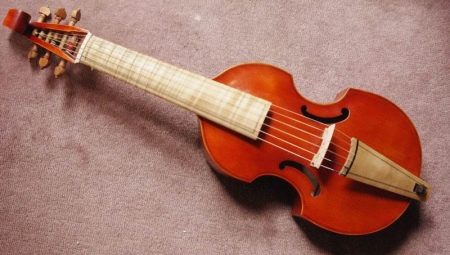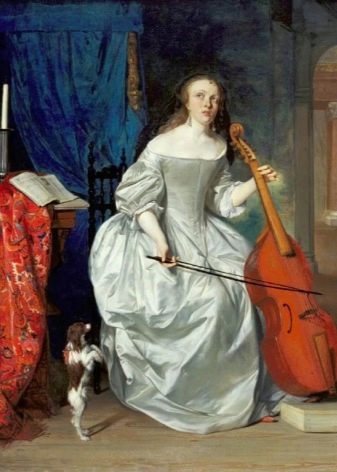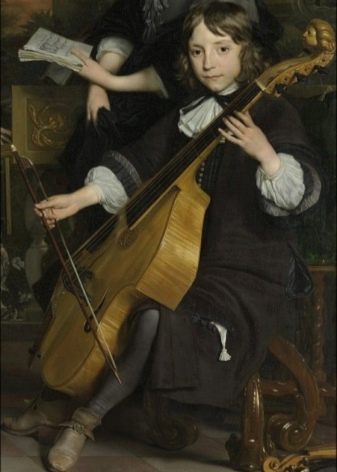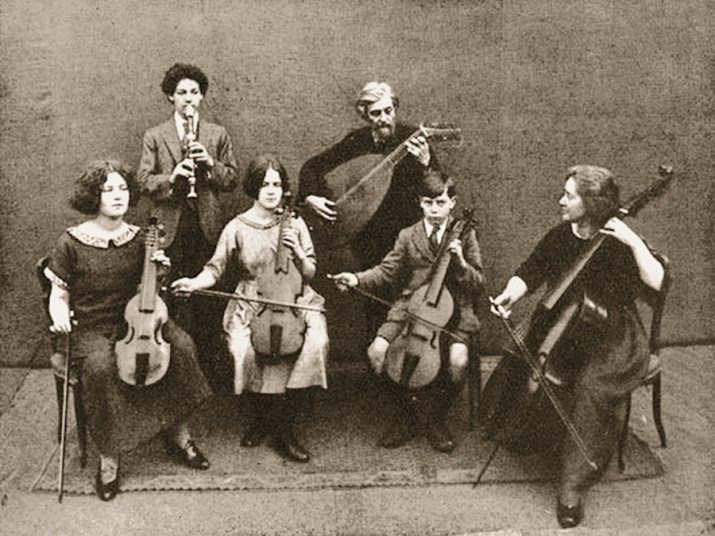Viola da gamba

Viola da gamba is a musical instrument with five to seven strings and a bow, reminiscent in range and size of the related cello. Usually the viola is played in a sitting position, holding it vertically between the knees or placing it with the sidewall on the leg.

History and meaning
The musical instrument appeared in the 16th century during the Renaissance. Compared to violins, its proportions had a shortened body in relation to the length of the strings and a flat back. The gambas were thinner and lighter, their body shape was not so contoured that it did not affect the sound produced to such an extent.
Of the entire family of viols, the foot gamba remained the most important: many works by famous authors of the middle of the 18th century were composed for playing the gamba. By the end of the 16th century in Italy, the massive distribution of violins began as musical instruments most suitable for the Italian mentality, gambas found their true purpose in Great Britain. Viola da gamba was fully suited to the English musicians, as evidenced by the many wonderful music created for ensembles over a century. In those years, the families of English musicians had gambas of different sizes.


Gamba, due to the special structure of the neck with frets, produced a more refined and muffled sound than instruments of the violin family, but did not give freedom of intonation. Subtle soft sounds were her brightest expressive means, while there were no sound overloads.
However, the country where the solo possibilities of gamba were fully disclosed was France, towards the end of the 17th century. The gamba's range has been expanded and another low string has been added.With encouragement from music connoisseurs, a great variety of exquisite pieces of music by Marina Mare have been released.
In the compositions of the French, it was possible to identify the techniques of string playing inherent in the plucked lute. Gamba has received the utmost development of its technical component. Aristocrats and representatives of a noble family improved in playing the viola. Despite their deep sounding, gambas were eventually supplanted by violins, which sounded louder in large halls, but had fewer strings. The intimacy of the musical sound made the gamba a solo instrument suitable only for small halls, and the extraction of aligned, lacking dynamics of sounds became at the same time the reason for the decline in the popularity of this extraordinary instrument. At the end of the 18th century, gambas almost completely disappeared from use, and the cello took their place.


Varieties
Typically, there are four varieties of viola da gamba:
- alto;
- tenor;
- treble;
- bass.

In addition to the main types, viola-lyres were made, which also had resonant strings. The unison-tuned strings were driven by the keys, and the drone strings were positioned on the fretboard.

For the tenor viola, which is a representative of this family, the generally accepted name "viola da gamba" was fixed. Throughout the history of the instrument's existence, gambas have been used:
- solo;
- ensemble;
- orchestral.
The British discovered the solo possibilities of gambas and began to produce reduced bass gambas, called the Division-Viol. The smaller solo gamba with variable tuning was called lyra-viola.

Revival of the instrument
The revival of viola da gamba took place at the beginning of the 20th century, when the gambist Christian Döbereiner, who performed a sonata by K.F. Abel in 1905, became the debutant of the new century. Döbereiner also performed the mid-18th century repertoire on gamba, soloing in concerts by the composer Bach.

At about the same time, in some European countries, interest in the viola aroused, ensembles of violists began to be created, for example, the A. Dolmech family in England and A. Wenzinger's quartet in Basel, as well as mixed ensembles of ancient instruments with violas.

Viola da gamba, almost forgotten and supplanted by other instruments, returned to concert halls and churches due to the performances of contemporary performers. Italian Paolo Pandolfo was named the best gamba virtuoso. Today it is generally accepted that the double bass combines some of the characteristics of both the viola and the violin. Playing the instrument has been recreated by viola lovers and special societies, which include musicians who are fond of it.

For how viola da gamba sounds, see the next video.








